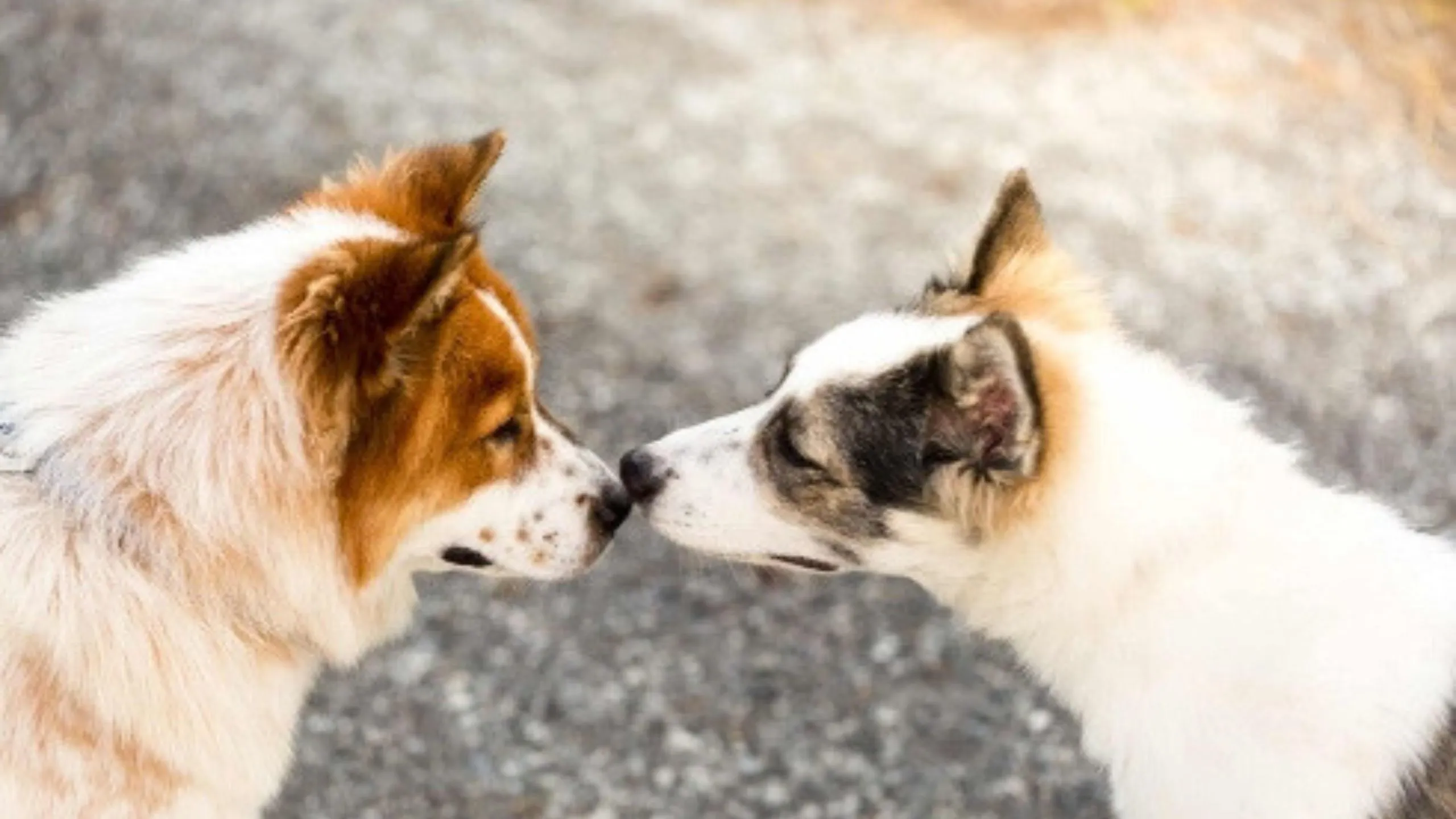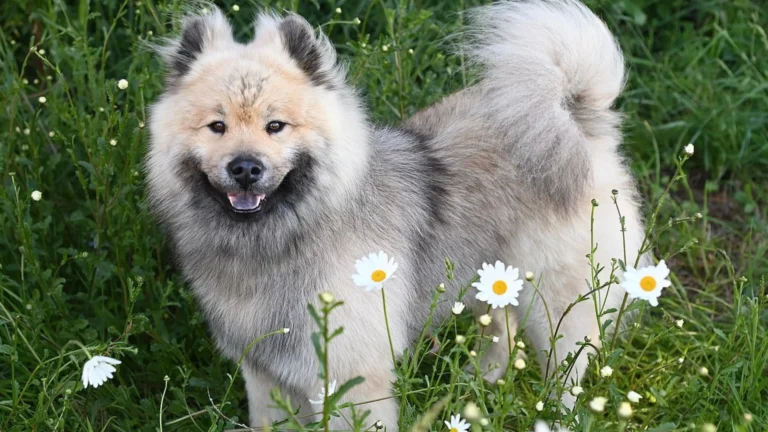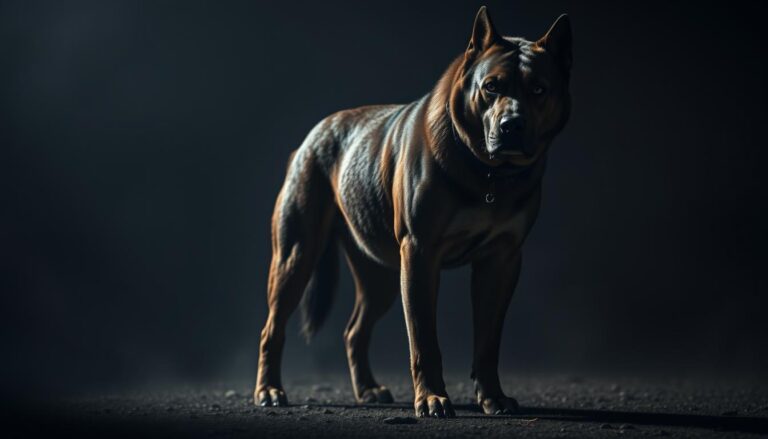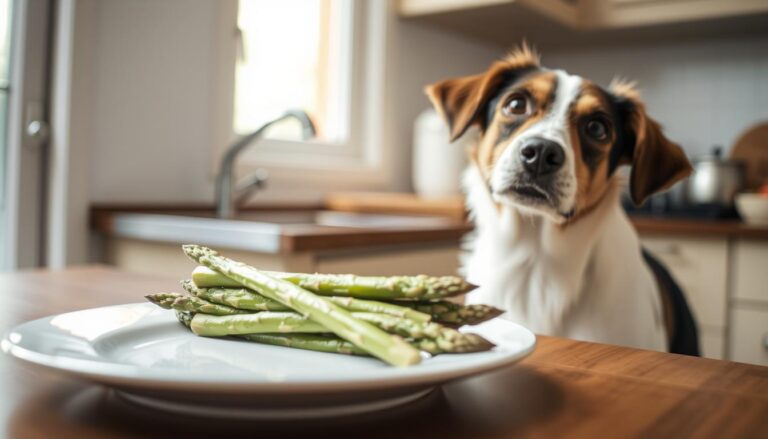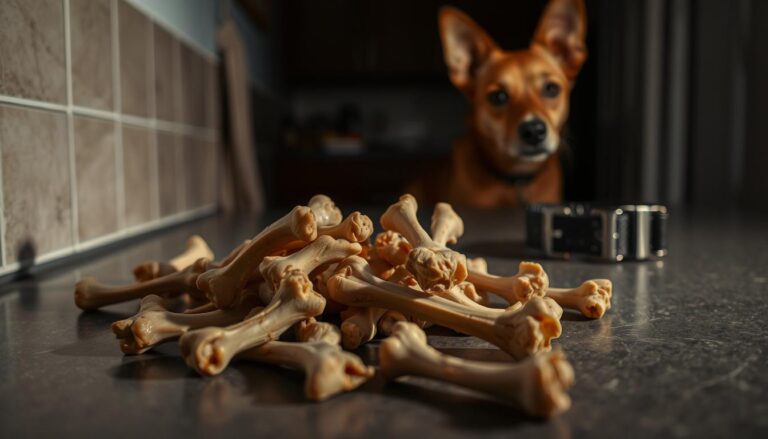How Do Dogs Mate? Understanding the Mating Process
Every dog owner knows the deep bond between their pet and nature’s reproductive dance. The mating process in dogs is a mix of instinct, hormones, and behavior. It’s how dogs keep their species alive.
Learning about dog mating is more than just curiosity. It’s about respecting the natural ways animals reproduce. Knowing the mating process helps pet owners and breeders support their dogs during this important time.
Dog mating is a series of steps influenced by hormones, environment, and instinct. From the first attraction to the final act, each step is vital for successful breeding.
This guide will explore the world of dog reproduction. It will help you understand the mating process. Whether you’re a pet owner or thinking about breeding, you’ll learn a lot about this natural wonder.
Table of Contents
Introduction to Canine Reproduction
Canine reproduction is a complex and fascinating process. It involves intricate biological mechanisms and natural instincts. To understand dog breeding, we must delve into the biological and behavioral aspects of how dogs reproduce.
Dogs have unique reproductive characteristics that differ from other mammals. Their mating behaviors are driven by powerful biological signals and hormonal changes. These have evolved over thousands of years.
Basic Understanding of Dog Mating Behavior
Canine reproduction starts with specific behavioral patterns that signal mating readiness. These behaviors include:
- Scent marking
- Territorial displays
- Specific body language signals
- Hormonal changes in both male and female dogs
Natural Instincts and Hormonal Influences
Hormones play a critical role in dog breeding processes. Testosterone in males and estrogen in females trigger specific reproductive responses. These responses prepare them for potential mating.
“Understanding hormonal cycles is key to responsible canine reproduction,” says veterinary reproductive specialist Dr. Karen Schmidt.
The Importance of Responsible Breeding
Responsible dog breeding goes beyond simple mating. It involves:
- Comprehensive health screenings
- Genetic testing
- Understanding breed-specific characteristics
- Ensuring optimal health of parent dogs
By prioritizing the health and well-being of breeding dogs, we contribute to producing healthier, happier generations of canine companions.
The Dog Heat Cycle Explained
Knowing about the reproductive cycle of dogs is key for good pet care and breeding. The heat cycle, or estrus cycle, is a complex process for female dogs. It’s a natural rhythm that’s vital for their reproduction.
The breeding season for dogs has four main stages:
- Proestrus: Initial stage lasting 7-10 days
- Estrus: Peak fertility period of 5-9 days
- Diestrus: Post-breeding recovery stage
- Anestrus: Resting phase between cycles
Each stage has its own changes. In proestrus, female dogs swell and have bloody discharge. Estrus is when they’re most fertile and ready to mate.
| Stage | Duration | Key Characteristics |
|---|---|---|
| Proestrus | 7-10 days | Vaginal swelling, blood discharge |
| Estrus | 5-9 days | Peak fertility, receptive to mating |
| Diestrus | 60-90 days | Hormonal stabilization |
| Anestrus | 4-5 months | Reproductive system rest |
“Understanding your dog’s heat cycle is key to responsible breeding and pet care.” – Veterinary Reproduction Specialists
The heat cycle’s frequency changes by breed and dog. Most dogs have two cycles a year. But smaller breeds might cycle more. Watching these changes helps you care for your dog better and make smart choices about their health.
How Do Dogs Mate: The Complete Process
Understanding dog mating habits is complex. It involves many stages from attraction to successful mating. Each stage is fascinating and shows the intricate nature of dog mating.
Attraction and Courtship Phase
Dog mating starts with a courtship ritual. Both male and female dogs use specific behaviors to communicate:
- Scent marking to signal reproductive readiness
- Distinctive vocalizations that attract potential mates
- Physical displays of interest and availability
Physical Mating Process
The actual mating process is precise. When a female dog is in heat, she signals to males. This triggers a specific sequence of behaviors.
| Mating Stage | Key Characteristics |
|---|---|
| Mounting | Male dog positions himself behind the female |
| Penetration | Occurs with careful alignment and positioning |
| Copulatory Tie | Ensures maximum reproductive potential |
Duration and Timing
Dog mating lasts between 10 to 30 minutes. Factors such as breed, individual characteristics, and reproductive health can influence the mating process. Professional breeders monitor these interactions for optimal success.
The intricate dance of canine reproduction reveals nature’s remarkable design for species continuation.
Understanding the Copulatory Tie
Dog breeding facts show a fascinating part of canine reproduction called the copulatory tie. This unique event happens during mating and is key for successful breeding. It ensures a special physical connection for the best chance of fertilization.
The copulatory tie is a natural and important part of dog mating. It might seem strange to those new to canine reproduction. During mating, the male dog’s penis swells inside the female’s reproductive tract. This creates a temporary lock that can last from 10 to 30 minutes.
- Helps ensure successful sperm delivery
- Prevents other males from mating during this time
- Supports natural reproductive mechanisms
So, why is this process so important? The tie has several key functions in dog breeding. It allows for the best sperm transfer and reduces sperm leakage. This increases the chance of pregnancy.
| Copulatory Tie Characteristics | Details |
|---|---|
| Average Duration | 10-30 minutes |
| Biological Purpose | Optimize fertilization chances |
| Physical Mechanism | Swelling of male penis and female muscular contraction |
During mating, both animals stay calm and still. This is a completely natural occurrence and not a reason for worry. Veterinarians and experienced breeders know this tie is normal and vital for successful breeding.
Physical Signs of Mating Readiness
Understanding dog mating behavior is key. You need to watch for specific signs. These signs help with dog breeding and prevent unwanted pregnancies.
Dog breeding is complex. It shows through physical and behavioral changes in both males and females.
Female Dog Indicators
Female dogs show clear signs when ready to mate:
- Swollen vulva with noticeable enlargement
- Bloody vaginal discharge
- Increased frequency of urination
- Behavioral changes like restlessness
Male Dog Behaviors
Male dogs act differently when they sense a female in heat:
- Heightened alertness and excitement
- Persistent attempts to locate females
- Increased territorial marking
- Restless wandering and potential escape attempts
Optimal Timing Signals
Finding the right time for mating is crucial. The best time is usually 10-14 days into the female’s heat cycle.
| Stage | Female Indicators | Male Response |
|---|---|---|
| Early Heat | Initial swelling, light discharge | Mild interest |
| Peak Fertility | Heavy discharge, receptive behavior | Maximum attraction |
| Late Heat | Discharge decreasing | Reduced interest |
Professional breeders suggest talking to a vet to find the best mating time for your dogs.
The Biology Behind Dog Mating
Canine reproduction is a complex process driven by hormones. It’s fascinating to learn about the science behind dog mating. This helps us understand their remarkable reproductive system.
The mating process starts with hormonal changes. These changes trigger certain behaviors and body responses. Female dogs have a cycle of hormonal changes, especially with estrogen and progesterone.
- Estrogen levels rise during the heat cycle, signaling reproductive readiness
- Progesterone plays a crucial role in preparing the reproductive system
- Pheromones help attract potential mates through chemical signals
Male dogs have their own biological responses. Testosterone is key for sperm production and mating behaviors. This creates a complex interplay in dog breeding facts.
Key biological components in canine reproduction include:
- Hormone regulation
- Sperm production
- Egg development
- Uterine preparation
The dance of hormones, pheromones, and body changes is amazing. Each step is carefully planned for successful reproduction.
Essential Health Considerations Before Breeding
Before you start breeding dogs, you need to plan carefully and check their health. Breeding dogs is a big job that requires medical checks and genetic tests. These steps help keep the health of the dogs and their puppies safe.
It’s important to know about the health needs of your dogs and future puppies. This knowledge helps protect their well-being.
Required Health Screenings
Health tests are key for successful dog breeding. Your vet should do several important tests:
- Genetic disorder screening
- Hip and elbow dysplasia evaluations
- Breed-specific genetic testing
- General physical health examination
Age and Maturity Factors
Knowing when your dog is ready to breed is crucial. Different breeds mature at different times:
- Small breeds: Mature around 6-12 months
- Large breeds: Mature between 12-24 months
- Don’t breed dogs that are too young or too old
Genetic Considerations
Genetic health is very important in dog breeding. Dogs should be tested for genetic diseases before breeding. Talk to a vet geneticist to learn about risks and make smart breeding choices.
Responsible breeding is about creating healthy, genetically sound puppies, not just producing offspring.
Post-Mating Care and Monitoring
After successful dog breeding, it’s vital to care for both male and female dogs. Watching them closely after mating is key to their health and possible pregnancy. Dog breeding tips say that observing and supporting them is crucial during this time.
Right after mating, make sure both dogs are in a calm, comfy spot. Focus on their physical and emotional health.
- Provide a quiet, stress-free resting area
- Ensure access to fresh water
- Monitor for any signs of discomfort
- Maintain a consistent, gentle temperature
Watching for health signs is important in canine reproduction. Look out for these signs that might mean they need a vet:
| Dog | Warning Signs | Recommended Action |
|---|---|---|
| Female | Excessive bleeding, lethargy | Immediate veterinary check |
| Male | Swelling, pain during urination | Professional medical evaluation |
If the female dog might be pregnant, early care is essential. Nutritional support and gentle exercise are important. Talk to your vet about special diets and prenatal care for the best results for mom and puppies.
Your careful attention during this time can greatly improve the breeding process’s success and health.
Common Challenges During the Mating Process
Dog breeding can face many unexpected challenges during mating. Knowing these issues helps breeders get ready and solve problems. The mating process needs careful attention to many factors that affect success.
Experienced breeders know several key challenges in dog breeding:
- Inexperience of breeding dogs: First-time breeding dogs might struggle with mating behaviors
- Physical size differences between potential mates
- Timing complications within the female’s reproductive cycle
- Potential health restrictions preventing successful mating
It’s important to know about potential barriers in dog breeding facts for success. Physical challenges include:
- Difficulty achieving proper positioning
- Reluctance of either male or female dog
- Structural anatomical constraints
Getting help from a professional vet is key when facing mating challenges. Your vet can give detailed assessments and suggest special help for successful breeding.
Successful dog breeding requires patience, understanding, and professional expertise.
By watching closely and acting early, most mating problems can be solved. This ensures the best results for both dogs involved.
Creating the Right Environment for Breeding
Successful dog breeding needs a calm and comfy space. This supports natural mating in dogs. The right setup is key for a good breeding experience for both dogs.
When setting up your breeding area, consider these key factors for optimal dog breeding information:
- Choose a quiet, familiar location with minimal distractions
- Ensure the area has non-slip flooring for safety
- Maintain a comfortable temperature between 68-72°F
- Provide soft bedding or mats for comfort
The physical environment is crucial in reducing stress during mating. Stress can negatively impact breeding success. So, careful preparation is essential. Pick a space where both dogs feel secure and relaxed.
Necessary supplies for your breeding area should include:
- Clean towels
- Water bowl
- First aid kit
- Cleaning supplies
Your calm presence is important. Dogs are sensitive to human emotions. Keeping calm helps create a positive breeding atmosphere. Be ready to intervene gently if needed, but avoid causing unnecessary stress during mating.
Supporting Both Dogs Through the Process
Dog breeding needs careful attention to both dogs’ emotional and physical health. Creating a supportive and comfortable environment is key. It helps both dogs feel secure and relaxed.
Breeding dogs is a delicate process that requires comprehensive care and understanding. Your approach can greatly impact the mating’s success and overall experience.
Physical Support Needs
When supporting dogs through mating, consider these critical physical aspects:
- Ensure appropriate size matching between dogs
- Provide assistance with mounting if necessary
- Check for any physical limitations or mobility challenges
- Have veterinary support available if complications arise
Emotional Care Requirements
Emotional support is crucial during dog mating. Watch for stress signals and create a calm atmosphere:
- Minimize external distractions
- Maintain a quiet, peaceful environment
- Observe body language for signs of anxiety
- Provide gentle reassurance to both dogs
Environmental Considerations
The right environment can make a significant difference in successful dog breeding. Consider these key factors:
- Choose a neutral, comfortable space
- Maintain moderate temperature
- Ensure easy access to water
- Create a safe, enclosed area
Remember, patience and attentiveness are your most valuable tools in supporting dogs through the mating process.
Conclusion
Learning about how dogs mate is key to understanding canine biology. Your journey into dog breeding shows the detailed process beyond simple physical acts. Each mating stage needs careful attention and respect for the animals’ natural ways.
Starting a successful breeding program means knowing your dogs’ health and genetic history. Getting vet advice is crucial for safe and healthy breeding. This way, you avoid genetic risks for the dogs and their future offspring.
Responsible breeding is more than just making dogs. It’s about keeping breed standards, caring for animals, and helping the dog population. Whether you breed dogs or just want to know how they mate, learning is your best ally. Your dedication to ethics and knowledge supports dogs’ long-term health.
Every breeding choice is a big responsibility. Approach mating with patience, science, and real care for the animals. Talking to experienced vets and breed experts is key to mastering this complex but rewarding part of dog care.

